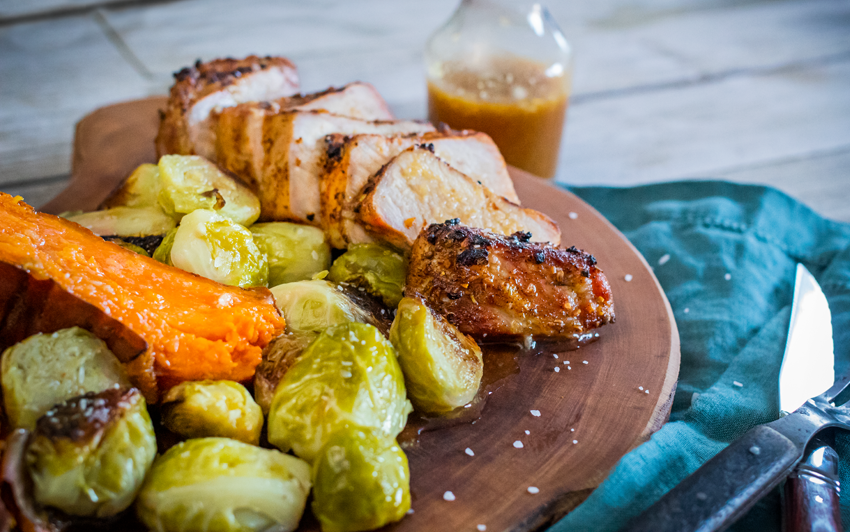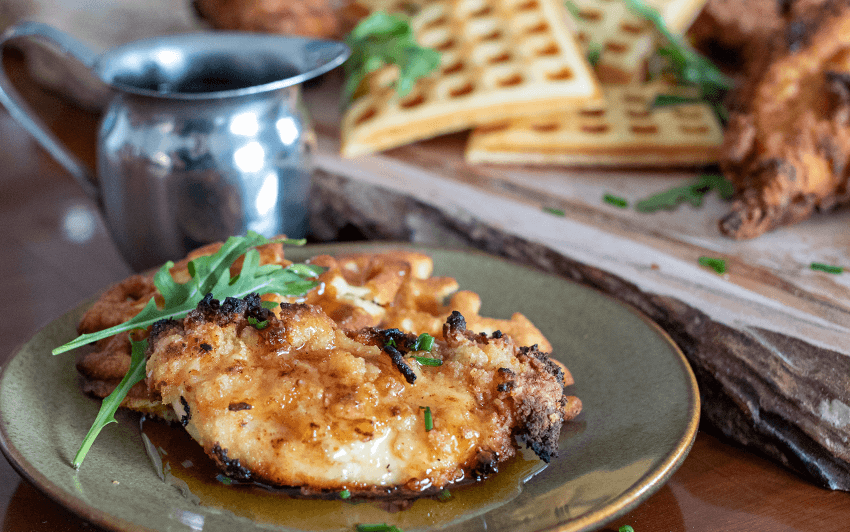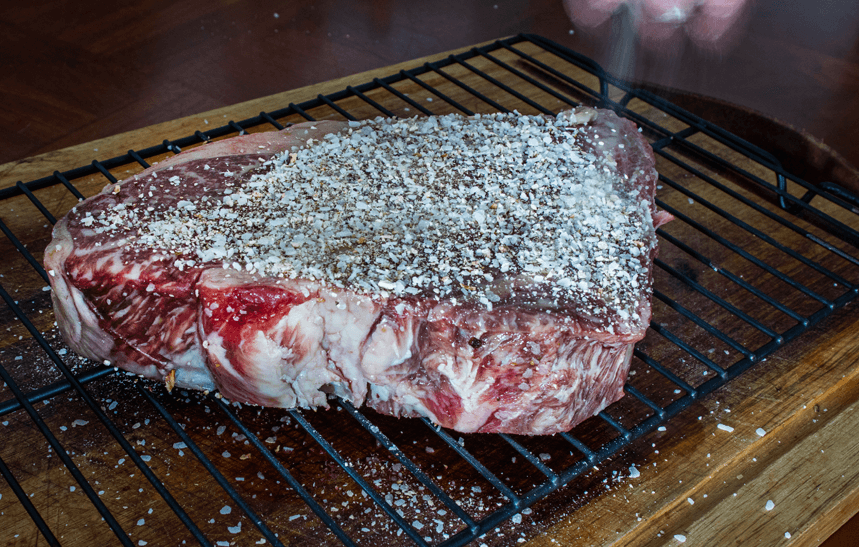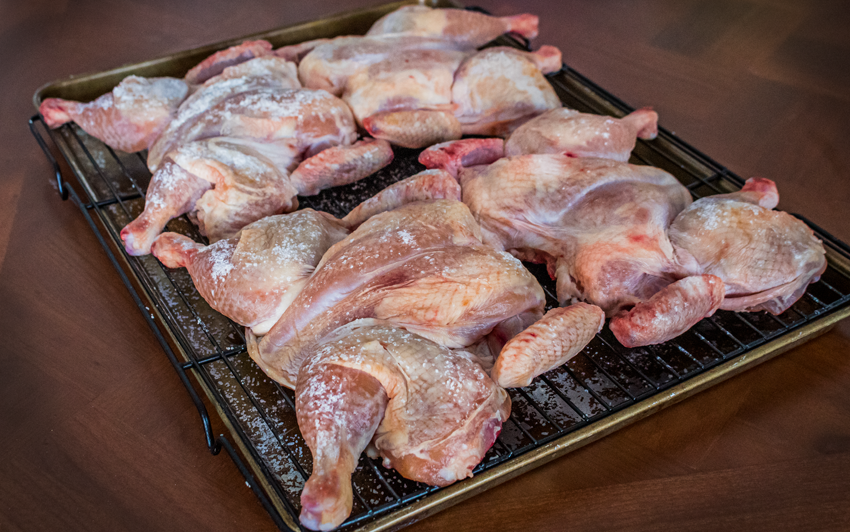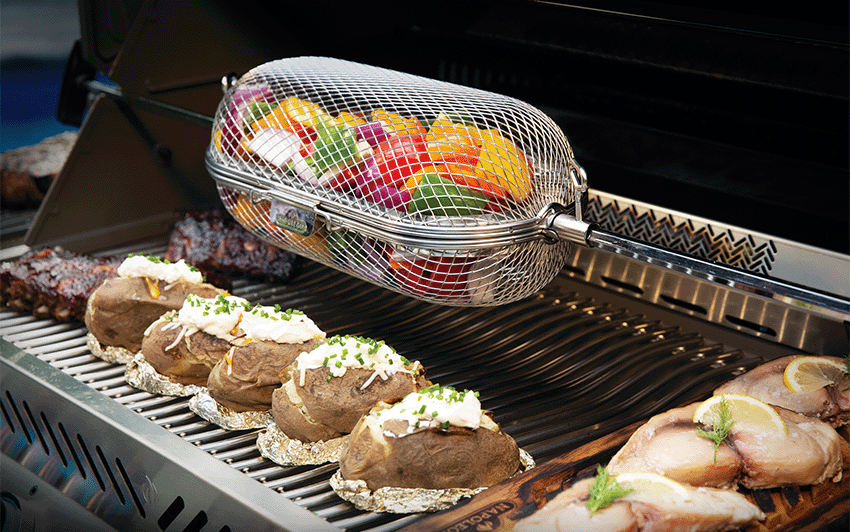
What is Dry Brining and How Do You Do It?
You’ve heard the term brining. While not terribly complicated when you consider the basic steps, using the brine technique before cooking your meals does come with inherent drawbacks. Is there a better way to achieve the amazing results of brining with less effort? That’s where dry brining comes in. Keep reading this article to discover what dry brining is and how you go about dry brining something. Learn all about dry brine, pick up techniques, tips, and even some great applications you may not have thought of for your next meal on the barbecue. Get the recipe for Rotisserie Smoked Ribs with Dr. Pepper BBQ Sauce.
About Brining
What is brining? Brining is when you submerge foods, generally meat, into a solution of salt and water. As the salinized water is absorbed into the meat, it loosens muscle fibers and drags water through the cells. This technique is ideal for lean and bland proteins like pork chops, chicken breasts, and even whole turkeys.
Are there Drawbacks to (Wet) Brining?
There are drawbacks to this technique. Because it’s just salty water that is being pulled through the meat, a food’s flavor can become diluted. The protein you plan to cook is literally waterlogged. This moisture also prevents the Maillard Reaction, that delicious browning of your food.
Brining takes up space in your fridge, especially if you are brining larger items like roasts and whole birds. Furthermore, the container used needs to have enough volume to house both the liquid and the meat, taking into consideration the volume that is being displaced by the foods being brined. There are ratios to manage, waiting for the brine to cool, or ratios that take into account the addition of ice. And finally, while a brine may smell great with the additional aromatics the recipe calls for, they don’t enter the food and won’t really impart any flavour, only the salt penetrates and adds to the dish.
When to (Wet) Brine
Wet brining is handy for a few things, when you are working with fish, sometimes the juices get smelly but the fish is still good or fresh. Brine will remove the smell, which is great when you are serving a dish like ceviche. Brine also helps to create a beautiful pellicle when you plan on cold-smoking fish too. Wet brining is great for whole vegetables like carrots and when you plan on battering things like chicken, where the brine becomes the batter or the binder for the bread coating.
Smoky Brined Pork Chops
These Smoky Brined Pork Chops are succulent and pair perfectly with baked sweet potatoes and brussels sprouts.
Barbecued Chicken and Waffles
This recipe for Chicken and Waffles is a great example of brine becoming the binder for breading. Have you ever tried Chicken and Waffles? They are so amazing, salty and sweet, the epitome of comfort food.
What is Dry Brining?
Dry brining is, in the simplest of terms, pre-salting your food and allowing it to rest before cooking. The results are a tastier and juicier meal with results similar to when you wet brine, with better searing when you go to cook.
The Science of Dry Brining
How does dry brining make your meals taste better? When you salt, meat in particular, the salt will pull the moisture to the surface. The moisture dissolves the salt, which then turns into a concentrated brine on the surface, which is then reabsorbed into the meat. Once the moisture is reabsorbed, the surface of the meat becomes dry, providing a better searing experience. When you salt meat, the protein is dissolved and it forms a gel that retains moisture, a big benefit when you have larger muscles and cuts.
Just about every meat dish will benefit from being dry brined, so do some vegetables, especially ones that you plan on lacto-fermenting. A partial exception to the rule would be hamburgers. While pre-salting your burgers will change the texture of a burger negatively, dry-brining ground meat does provide a bouncy texture that is ideal for sausages, meatballs, and meatloaves.
How to Dry Brine
For best results, use kosher salt. This is for two reasons. Kosher salt is easier to pick up and feel as you use it, and it doesn’t clump like table salt will, while providing twice the amount of sodium as kosher when you measure by volume. Most prefer Diamond Crystal; however, Windsor and Morton are both acceptable as well.
-
Drop three-finger pinches from 8 to 10 inches (20 to 25 cm) above the foods that you are salting, to provide an even coating. It is estimated that you will use about 1 tbsp. per 5 lbs. (2.25 kg) of food. This depends on how things look as you are covering.
-
Season every surface on all sides, and on the inside if there is a cavity in the case of poultry or fish. Also, for whole poultry, add some salt below the skin to ensure that more than the skin is dry brined, this can also speed up the dry brining process.
-
Place your salted food onto a wire rack in a rimmed baking sheet. Airflow around the food is incredibly important to allow the surface to dry out. This provides a better sear and gets a tastier crust.
-
You are ready to cook when the surface is dry. For smaller cuts, steaks, fish, chicken parts, and chops, this process will take about 45 minutes to an hour for optimal dryness. Roasts and whole poultry will need overnight up to 72 hours. Do not go any longer than 72 hours, any more than that will run the risk of drying out the intramuscular fat in the meat. This can lead dry food, but it will be well seasoned.
Seasoning and Dry Brining
Can you use a seasoning blend (purchased or homemade) when dry brining? Yes! You can choose to use a seasoning blend, make your own, or salt-then-season. Just remember to omit salt from the seasonings you are using after you pre-salt or dry brine.
If you choose to add seasoning when you dry brine, start with the salt on your food. Then you can add the other flavors on top. Set to rest as the recipe requires.
If you choose to season after. Remember that seasoning blends contain salt, and you have already salted the food. This can lead to oversalting, so it is best to make your own blend of spices from what you have on hand and omit the salt.
Tips and Tricks to Dry Brining
For best results, use kosher salt. This is for two reasons. Kosher salt is easier to pick up and feel as you use it, and doesn't clump like table salt will, while providing twice the amount os sodium when you measure by volume. Most prefer Diamond Crystal; however, Windsor and Morton are both acceptable as well.
-
If you do not have kosher salt, you can make do with coarse sea salt or Himalayan pink salt, just be careful because the finer/smaller the salt crystal, the more salty the food will be.
-
Do not rinse the foods that you have dry-brined. You just spent all of that time drying the food out for better searing and flavor, you don’t want to wet that surface again.
-
Get yourself a sensitive scale to measure the amount of salt in a three-finger pinch a few times to get a sense of “how much” you are using. This can be translated to your recipes when people ask you to share.
-
You can add seasonings/rubs at the same time or after you dry brine. Keep in mind that other seasonings will not penetrate into the meat like salt but will stay on the surface. Also, if you are using a rub, during or after salting, you will want to omit salt or use a salt-free seasoning blend because you have already added all of the salt you will need.
-
Drippings, sauces, and gravies can become too salty if you use store-bought broths and stock alongside drippings from a dry-brined meal. Instead, use homemade stock, or the water from vegetables like potatoes that you have cooked for the meal and then season the gravy or sauce to taste afterwards.
What are the Benefits of Dry Brining?
Besides the fact that it has been scientifically proven that foods that are dry brined will retain moisture better when cooked, there are several fantastic benefits to using this technique, including:
-
No measuring, proportions or ratios to contend with. Just season and sit.
-
You’re using less salt overall because it isn’t being diluted in water, furthermore, you won’t need to include salt in your seasonings because your food is already seasoned. It should not be a surprise that you would end up using a larger amount of salt on larger cuts like a roast, but when you look at the proportions of salt to meat, you will find that less is used overall.
-
This process takes up less space than traditional wet brining. You still need to make space in the fridge if dry brining whole birds or anything that takes longer than 60 minutes to dry and be ready for cooking, but this process still occupies less space and volume.
-
Once the surface moisture has been reabsorbed into the meat, the surface will remain dryer for the best browning and crust formation. This is also part of the secret to the best crispy poultry skin.
-
Softer meats like fish will become firmer for easier cooking and a better dining experience.
BBQ Roasted Cornish Hens
Get crispier skin on your favorite poultry dishes by following the tips and tricks below. Try this recipe for Barbecue Roasted Cornish Hens.
Are There Drawbacks to Dry Brining?
Dry brining seems to be a miracle of delicious proportions. Possible drawbacks would include the space needed to dry brine, which is still considerably less than wet brining. There is also the time factor. It can range from 45 minutes to 72 hours. However, we can all agree, the results are spectacular. Well worth the wait.
Brine and Share With Us!
Now that you know what dry brining is and how you go about doing it, what are you going to dry brine next? Have you ever tried this technique without realizing what it was? Tell us about your dry brining adventures and share your stories, recipes, and photos with us on social pages like our Facebook and Tiktok, using the hashtags #NapoleonEats and #NapoleonGrills.
